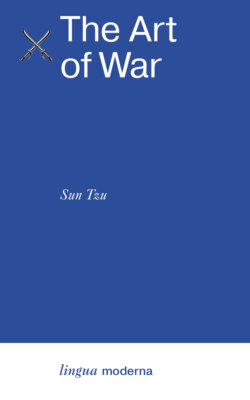The Art of War

Реклама. ООО «ЛитРес», ИНН: 7719571260.
Оглавление
Сунь-цзы. The Art of War
Introduction
I
II
III
The articles of Suntzu
I. Preliminary reckoning
II. Operations of war
III. The attack by stratagem
IV. The order of battle
V. The spirit of the troops
VI. Emptiness and strength
VII. Battle tactics
VIII. The nine changes
IX. Movement of troops
X. Ground
XI. The nine grounds
XII. Assault by fire
XIII. The employment of spies
The sayings of Wutzu
Introduction
I. The government of a country
II. Estimation of the enemy
III. Control of the army
IV. Qualities of the general
V. Suiting the occasion
VI. Encouragement of the troops
Отрывок из книги
Written in the fifth century, Suntzu and Wutzu still remain the most celebrated works on war in the literature of China. While the chariot has gone, and weapons have changed, these ancient masters have held their own, since they deal chiefly with the fundamental principles of war, with the influence of politics and human nature on military operations; and they show in a most striking way how unchanging these principles are.
When these books were written, China was a conglomerate of principalities in continual ferment. Personal ambition and intrigue, and not the wishes of the people, were the main factors in these wars. Patriotism, or a popular cause, could not, therefore, be relied on to maintain the moral of the levies. Instead of these, what may be called the force of despair is pointed out as the most powerful agent in giving cohesion and energy to an army. The general is urged to take a vigorous offensive; and to act at a distance from his base, where defeat means disaster, and where desertion is minimised owing to the distance from home. He should, in fact, burn his boats before an action, or, in Chinese phrase, act as one who removes the ladder from under those mounted upon the roof.
.....
The masters do not make, however, the mistake of advocating a passive defensive. Suntzu lays down that the division of the forces which this strategy involves, is to be everywhere weak, rendering the army liable to be taken in detail by the concentrated forces of the enemy. It is rather the defence which avoids battle by mobility and manœuvre, induces the enemy by stratagem to divide his forces, or act in conformity with our wishes, and then falls upon him.
With regard to the tactics of the battlefield, the pitched battle, or, in other words, the frontal attack, is considered unworthy of the skilful general. The plan of attack should consist, broadly speaking, in the division of the army into two forces. The enemy is “attracted and engaged by one force, and defeated with the other;” and here we have the containing or secondary attack, and the main or reserve force which decides the battle of to-day-a most striking instance of the continuity of military principles.
.....